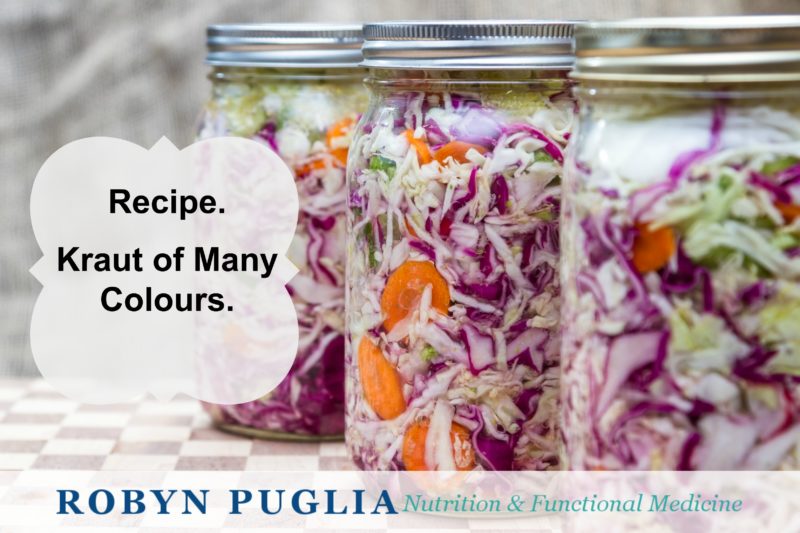Homemade sauerkraut is tangy, crunchy, and delicious and does not resemble or taste like the canned variety that may contain vinegar, sugar and limp cabbage (due in part to being cooked and/or pasteurized. Naturally fermented sauerkraut is high in vitamin C, fiber and low in calories. This colorful kraut uses red and green cabbage; rainbow carrots, fresh ginger root and dill for flavor. If preferred, use all green or all red cabbage and regular carrots; skip the ginger and dill or add other seasoning for a unique flavor that suits your taste. The important rule to follow is 3 tablespoons of sea salt per 5 pounds of cabbage. (NEVER regular table salt or iodized salt.) Too little salt can lead to spoilage.
Ingredients
- 5 pounds cabbage (Combination of green and red)
- 4 carrots, preferably organic, grated (may use rainbow carrots or regular carrots)
- 3-inch piece of fresh ginger root, peeled and chopped (3 tablespoons)
- 1 tablespoon dill seed, crushed in mortar and pestle or spice grinder
- 3 tablespoons sea salt
Instructions:
1. Rinse cabbage. Reserve 2-3 outer cabbage leaves from each cabbage head. Grate or slice cabbage by hand with mandolin, a knife or in food processor. Grate fine or coarsely depending on personal preference.
2. Place cabbage, carrots, ginger and dill seeds in large container; large soup pot or bowl. Sprinkle salt on the cabbage mixture and firmly knead until the mixture has reduced by at least half and liquid is present. The salt pulls water out of the cabbage and creates the liquid or brine. The salt also keeps the cabbage crunchy.
3. Tightly pack cabbage mixture into clean Mason jars leaving 3-inch space at top of jar. The goal is to force all air out and have the brine rise above the vegetables.
4. Roll reserved cabbage leaves and place on top of mixture. Brine should rise above cabbage leaves. Cover with lid and let ferment for 1 week to 8 weeks. Open the jar every day to “burp” the jars and let air escape (for the first week of fermenting) unless you are using an airlock lid that allows air to escape. Place jars on a tray in case there is leaking of brine.
5. Ferment for 1-8 weeks.
Fermentation expert, Sandor Katz, suggests “eating sauerkraut as you go.” Make a large batch. After one week, “harvest” one jar. Pack the sauerkraut back up and set aside to continuing fermentation. After that jar is finished, harvest another jar. Continue for 8 weeks or whenever it is done to your taste.
Homemade sauerkraut is not an exact science. Some like the taste after two weeks, others prefer a 6-8 week ferment.
Taste and enjoy!






